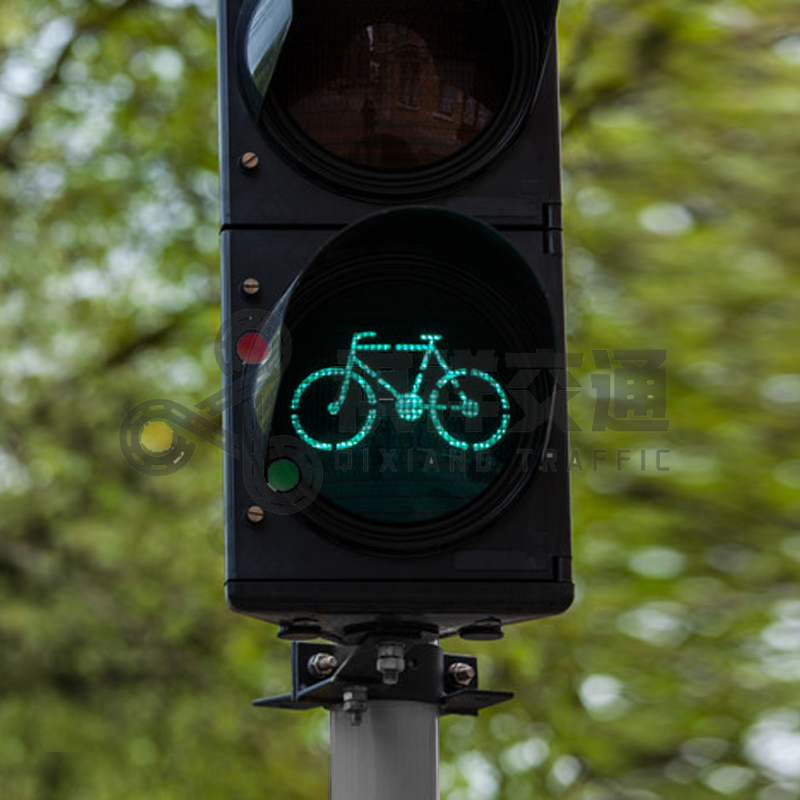In recent years, urban planning has increasingly focused on promoting sustainable modes of transportation, with cycling becoming a popular choice for many commuters. As cities strive to create a safer environment for cyclists, the implementation of LED traffic lights for bicycles has become a key aspect of this transformation. These innovative traffic signals not only improve cyclist safety but also help improve the overall efficiency of the city’s transportation system. In this article, we’ll explore the many benefits of LED bicycle traffic lights and their role in promoting bicycle-friendly infrastructure.
Enhance visibility
One of the most significant advantages of LED bicycle traffic lights is their increased visibility. Traditional traffic lights are sometimes obscured by weather conditions (such as rain or fog) or by surrounding buildings. In comparison, LED lights are brighter, more vibrant, and easier to see from a distance. This increased visibility is critical for cyclists, who often share the road with larger vehicles. LED lights ensure traffic signals are clearly visible to cyclists, helping to reduce the risk of accidents and improve overall road safety.
Energy efficiency
Bicycle LED traffic lights feature an energy-saving design that consumes significantly less energy than traditional incandescent or halogen lights. This efficiency not only reduces energy costs for municipalities but also helps reduce their carbon footprint. As cities become increasingly aware of their impact on the environment, the adoption of energy-saving technologies such as LED traffic lights is in line with wider sustainability goals. By investing in bicycle LED traffic lights, cities can demonstrate their commitment to green initiatives while improving the cycling experience.
Longer service life
Another advantage of bicycle LED traffic lights is their long service life. LED lights last much longer than traditional traffic lights, often up to 25 times longer. This durability means cities can reduce maintenance costs and replacement frequency. Fewer interruptions and glitches lead to more reliable traffic management systems, which is especially important for cyclists who rely on clear signals to navigate safely in urban environments.
Intelligent technology integration
Bicycle LED traffic lights can be integrated with smart technology to enable real-time data collection and traffic management. This integration can facilitate adaptive traffic signal control, where signal timing is adjusted based on current traffic conditions. For example, lights can prioritize cyclists during peak cycling times, reduce wait times and encourage more people to choose cycling as a mode of transportation. This smart technology not only enhances the riding experience but also helps make overall traffic flow more efficient.
Improved security features
Safety is a major concern for cyclists, and bicycle LED traffic lights are equipped with features designed to enhance safety. Many models include a countdown timer that tells the rider how much time is left before the traffic light changes. This feature enables cyclists to make informed decisions about whether to continue or stop, reducing the likelihood of an accident. In addition, some LED traffic lights are designed with specific cycling symbols so that both cyclists and motorists know when it is safe to travel. These visual cues are critical to fostering a culture of mutual respect on the road.
Increase driver awareness
The presence of bicycle LED traffic lights can also increase awareness among motorists. Brightly colored and strategically placed signals can remind drivers to be alert and watch out for cyclists. This increased awareness can lead to more careful driving behavior, ultimately creating a safer environment for everyone on the road. As cities continue to promote cycling as a viable transportation option, the visibility of bicycle LED traffic lights plays a vital role in educating motorists about the presence of cyclists.
Encourage bicycle culture
The implementation of LED traffic lights for bicycles is a clear signal from city planners that bicycles are a valuable mode of transportation. This commitment could encourage more people to cycle, boost population health and reduce traffic congestion. As more cyclists take to the roads, demand for cycling infrastructure is likely to increase, leading to further investment in cycle lanes, parking and other facilities. This positive feedback loop helps build a strong cycling culture in urban areas.
Cost effectiveness
While the initial investment in bicycle LED traffic lights may be higher than traditional traffic lights, the long-term cost savings are significant. LED lights consume less energy, lower maintenance costs and extend their service life, making them a cost-effective solution for municipalities. Additionally, potential reductions in accidents and injuries could reduce medical costs and reduce the city’s legal liability. By prioritizing cyclist safety and efficiency, cities can ultimately save money while improving the quality of life for residents.
In conclusion
Bicycle LED traffic lights represent a major advancement in urban traffic management and offer numerous benefits that enhance cyclists’ safety and experience. From improved visibility and energy efficiency to smart technology integration and increased driver awareness, these innovative traffic signals play a vital role in creating a bike-friendly environment. As cities continue to adopt sustainable transportation options, the adoption of bicycle LED traffic lights will undoubtedly help create a safer, more efficient, and more vibrant urban landscape. By investing in this technology, municipalities can pave the way for a future where cycling is not only a viable option, but the preferred mode of transportation for all.
Post time: Oct-22-2024







